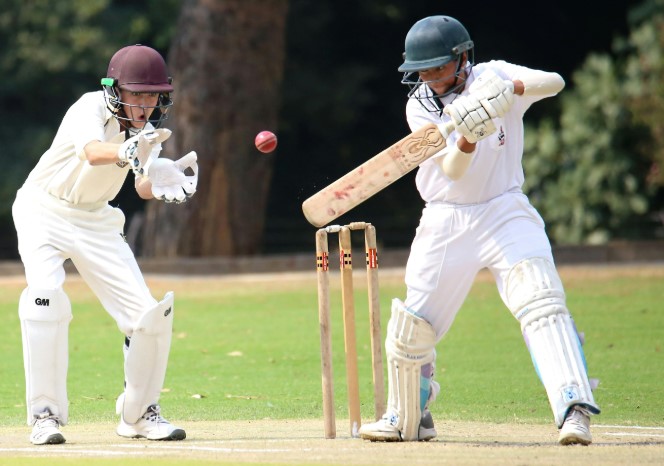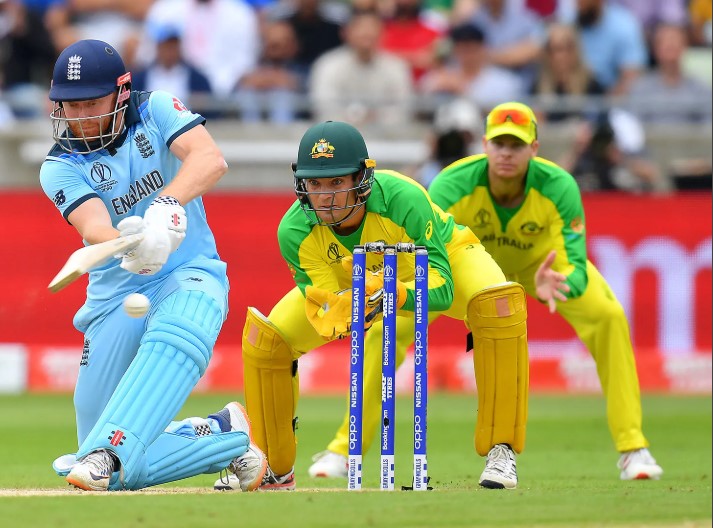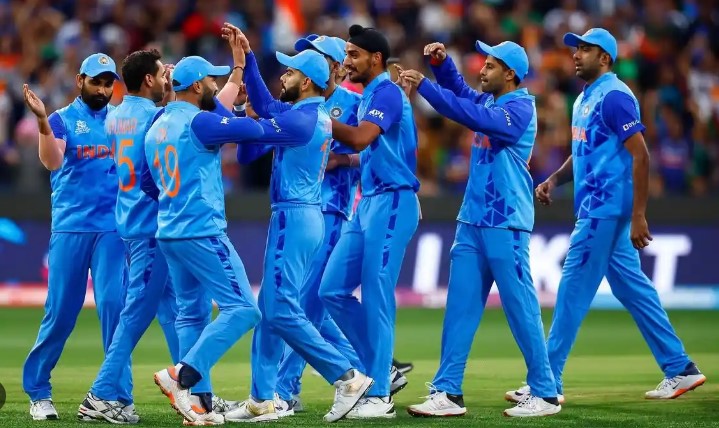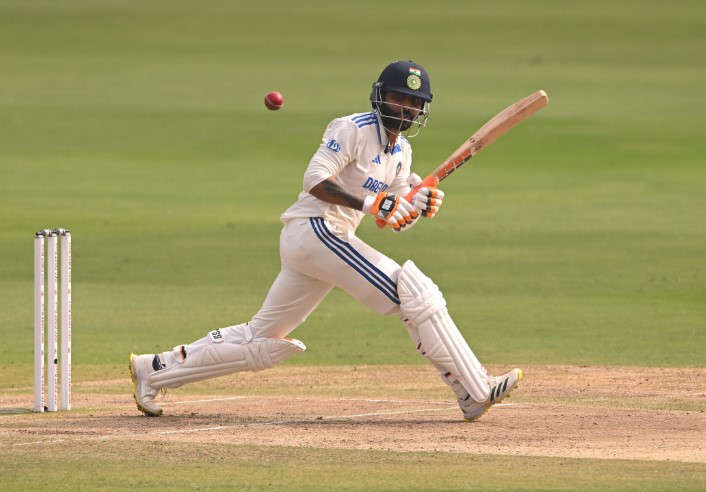Strike Rate: In cricket, a batsman’s performance is not only measured by the number of runs they score, but also by the SR—a statistic that reflects the rate at which a batsman scores runs during their innings. The strike rate is an essential measure, especially in limited-overs formats like One Day Internationals (ODIs) and T20s, where the pace of scoring is crucial. It helps gauge how quickly a batsman can score, adding value to their team’s overall performance.
This article will explore what a batsman’s strike rate means, how it is calculated, and why it matters in the context of cricket. We will also discuss how strike rates differ across formats and provide some examples of notable batsmen with impressive strike rates.
What Is A Batsman’s SR?

A batsman’s strike rate is a measure of how many runs they score per 100 balls faced. It is used to assess how aggressive or fast a batsman is at scoring runs in a given period. The higher the strike rate, the faster the batsman is able to score.
The formula for calculating the batsman’s strike rate is:
Strike Rate=Balls Faced/Runs Scored×100
For example, if a batsman scores 50 runs off 40 balls, their strike rate would be:
Strike Rate=40/50×100=125
A strike rate of 125 means the batsman scores 125 runs per 100 balls faced.
Why Is A Batsman’s Strike Rate Important?
The strike rate of a batsman plays a crucial role in determining the pace of a match, especially in limited-overs cricket. It is an indicator of how quickly a batsman is able to score and their ability to change the game’s momentum. Here are a few reasons why a batsman’s strike rate is important:
Impact on Team Performance: In shorter formats like T20 and ODIs, maintaining a high run rate is crucial for setting or chasing competitive targets. Batsmen with high strike rates can accelerate the scoring, ensuring that the team is always in the hunt for runs.
Assessing Aggression: A batsman with a high strike rate is typically more aggressive and plays an attacking role in the team. In T20s, for instance, players are often required to take risks, and a high strike rate is an indication of this aggressive intent.
Match Situation: The strike rate can vary depending on the match situation. For instance, a batsman may play cautiously in the early overs and then increase their strike rate as the innings progresses, especially when a big total is needed.
Evaluating Batting Styles: Batsmen with high SR are typically seen as explosive or aggressive players, while those with lower SR may focus more on accumulating runs or building partnerships. Understanding the context of a player’s strike rate helps in evaluating their overall contribution.
SR Across Different Formats

The importance of a batsman’s SR changes according to the format being played. In T20 cricket, where the focus is on quick scoring, a high SR is essential. In contrast, in Test cricket, the focus is more on building innings, and the strike rate is generally lower.
Strike Rate In Test Cricket
In Test cricket, where batsmen have more time to play, the SR is less of a focus compared to One Day Internationals and T20s. Test batsmen often build their innings over a longer period and may not score at a high SR. However, some aggressive players, such as Ben Stokes or Shane Watson, have managed to achieve impressive strike rates even in Tests.
| Format | Average SR | Explanation |
|---|---|---|
| Test Cricket | 40-55 | In Test cricket, batsmen tend to take more time, building partnerships and focusing on long innings. A strike rate of 40-55 is typical for Test players. |
| ODIs | 80-90 | In One Day Internationals, the batsman needs to score quicker, usually aiming for a strike rate of 80-90. |
| T20s | 130-160 | T20 cricket is fast-paced, and batsmen often aim for a strike rate above 130 to maintain pressure and keep the scoreboard ticking. |
SR In One Day Internationals (ODIs)

In ODIs, where each team is allowed 50 overs, the batsman is expected to score at a relatively faster pace compared to Tests. The average SR in ODIs usually ranges from 80 to 90, with a strong emphasis on running between the wickets, boundaries, and strategic hitting.
SR In T20 Internationals
T20 cricket, being the shortest format, requires the highest level of aggression from batsmen. Here, the SR can range from 130 to 160, depending on the batsman’s role in the team (whether they are a top-order aggressive player or a finisher in the lower middle order).
Factors Affecting A Batsman’s Strike Rate
Several factors can influence a batsman’s SR, including:
Type of Batsman: Aggressive batsmen like Chris Gayle, AB de Villiers, and Shahid Afridi are known for their high SR. On the other hand, players like Alastair Cook or Cheteshwar Pujara, who focus on building innings, may have a lower SR, but a higher contribution to the team’s stability.
Match Situation: The stage of the match can greatly affect a batsman’s approach. In the middle overs of an ODI or T20, batsmen typically try to accelerate, which might result in a higher SR. In contrast, during the early overs or in a Test match, a slower approach might be taken to build a solid foundation.
Opposition and Conditions: The quality of the opposition and the nature of the pitch can also affect how quickly a batsman scores. A bowler-friendly pitch will naturally lower a batsman’s SR, whereas flat, batting-friendly pitches allow for higher strike rates.
Batting Position: Top-order batsmen usually face more balls and often have a lower SR due to their role in laying the foundation for the innings. Middle and lower-order batsmen, on the other hand, are often tasked with accelerating the scoring rate, leading to higher SR.
Boundary Frequency: A batsman’s ability to hit boundaries plays a significant role in maintaining a high SR. Batsmen who strike the ball cleanly and consistently hit boundaries tend to have higher SR.
Notable Batsmen With High SR

Let’s take a look at some of the players who have consistently maintained high SR in limited-overs cricket.
| Batsman | Format | SR | Runs Scored | Key Strengths |
|---|---|---|---|---|
| Chris Gayle | T20 | 146.5 | 14,000+ | Aggressive hitting, power, and consistency. |
| AB de Villiers | ODI | 101.1 | 9,500+ | Versatile stroke play and innovative shots. |
| Shahid Afridi | ODI/T20 | 117.0 | 8,000+ | Explosive batting and ability to clear boundaries. |
| David Warner | T20 | 140.0 | 10,000+ | Quick runs and aggressive start in T20s. |
| Eoin Morgan | T20/ODI | 137.4 | 8,500+ | Tactical hitting and consistency in big matches. |
These players are known for their ability to consistently score at high SR, playing a crucial role in accelerating the game and changing the course of matches.
A batsman’s strike rate is one of the most important statistics in cricket, particularly in limited-overs formats. It reflects how quickly a batsman scores and helps assess their ability to control the tempo of the game. Understanding the SR provides deeper insight into a batsman’s batting style, their role in the team, and their ability to influence the match’s outcome.

By analyzing SR across formats, players, and match situations, one can appreciate the varied approaches batsmen take to maximize their scoring potential. Whether it’s a slow, methodical approach in a Test match or aggressive hitting in a T20, the SR remains a key indicator of a batsman’s effectiveness.
